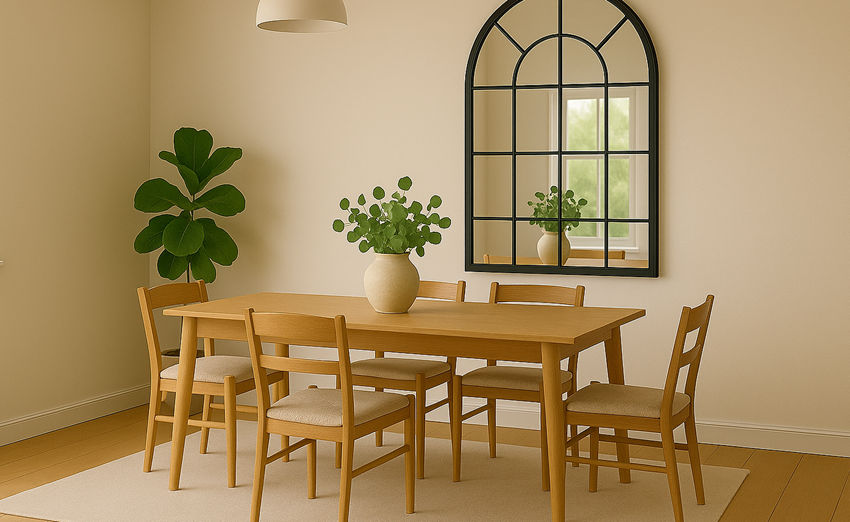Mirror, Mirror on the Wall…Does Yours Need an Overhaul?
When it comes to redesigning a room, you might think about color, style, flooring, lighting, wall treatments, furniture and art before finally focusing on your mirrors. Chances are when you do think about the mirrors in your home, you don’t necessarily spend a lot of creative energy exploring the possibilities they present. I need a mirror to see myself. I like this one. End of thoughts.
If you’ve been guilty of overlooking your mirror, read on and “reflect” on how you might make more of that highly adaptable room accessory.
6 Ways To Use Mirrors In Your Redesign Plan
1. Bounce the Light Around
Let’s start with the obvious: mirrors reflect light. Hang one across from a window and it will double the daylight like magic. If your space feels dim or lacks natural light, a mirror is your no-wiring-needed light enhancing solution.
Why it works: Natural light adds an authentic feel to any space. Mirrors spread that light around by softening shadows and brightening even the gloomiest corners. As an added bonus, they make your plants look like they’re thriving in stereo.
2. Fake a Window
If your room has one lonely window or, worse, none at all—hang a mirror where you wish a window existed. You’ll trick the eye into thinking there’s more openness than there really is.
Pro tip: Choose a mirror with divided panes or a window-like frame for maximum illusion
3. Make a Small Room Feel Bigger
A well-placed mirror can visually double the perception of room size. When square footage is limited, reflect the space itself, not just the light. This helps expand sightlines and gives your room that airy, open feel.
Try this: Position a large mirror behind a sofa or above a console table. It makes the room feel intentional and allows you to regularly view a really cool resident of the house.
4. Add Personality Without Clutter
Art is wonderful. So are family photos. But if your gallery wall is starting to feel like a bulletin board, a mirror can give your eyes a break. It’s decorative, but neutral. Polished, but not loud.
Designer move: Go bold with shape—arches, ovals, geometrics—to give you all the impact of a statement piece without overwhelming the space.
5. Enhance the Focal Point
Instead of making the mirror the star, let it support your star. Place one behind a beautiful lamp, a vase of flowers, or a piece of art. Suddenly, that object’s presence is enhanced.
Why it matters: Mirrors amplify what’s already working. They function like a backup singer —never stealing the spotlight, just making it shine brighter.
6. Anchor Awkward Spaces
Got a weird wall? An underwhelming entryway? A right-sized mirror can instantly give it purpose. If mirrors could talk, it might say, “This is a purposeful part of the house, not just a hallway that never quite figured itself out.”
Even better: Add a small table, a lamp, and a bowl for keys and you’ve created a moment.
Conclusion: Adaptive Problem-Solvers
Mirrors are more than reflective glass—they’re visual problem solvers. They brighten, enlarge, elevate, and refine. They work with every style, from modern minimal to vintage maximal, and they never clash with your color palette.
So the next time you’re staring at a blank wall wondering what it needs, experiment with a mirror. If your budget is tight, make sure to hit up some of your favorite thrift stores to search for a bargain.
Now, what will you do next to love where you live?
Please feel free to reach out to us at The Redesign Habit and ask questions or simply share a project that you are working on or have completed.
For more great stories and ideas please follow us on Facebook, Instagram, and subscribe to our YouTube Channel.






